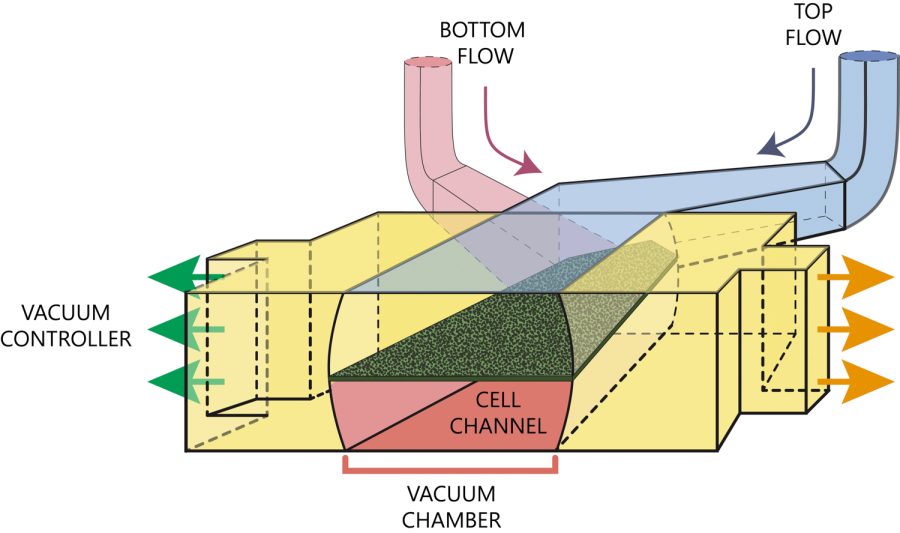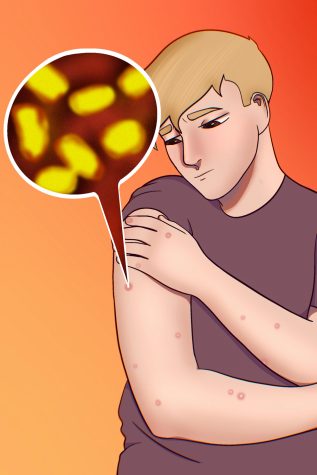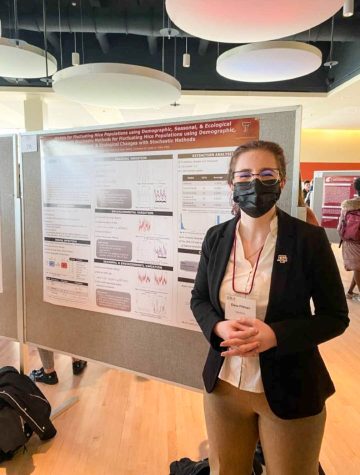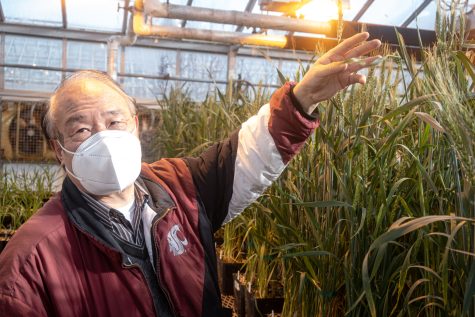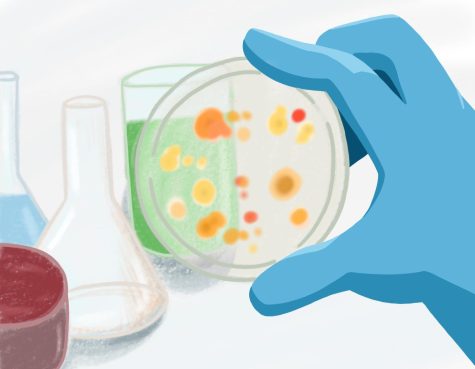Researchers develop gut-on-a-chip technology to study E. coli, future treatments
Chip mimics intestine of live animal; researchers will study crosstalk of host cells in microbiome
A successful gut-on-a-chip model will determine whether or not researchers can use microcin to control an infection.
June 20, 2022
WSU researchers are developing gut-on-a-chip technology to determine why Escherichia coli can be lethal in dogs and humans.
Escherichia coli, or E. coli, is a group of bacteria that live in the intestinal system of humans and animals. Some types are harmless while others, like Enterohemorrhagic E. coli, can cause problems in the intestinal tract, said Yoko Ambrosini, Department of Veterinary Clinical Sciences assistant professor.
If lethal, Enterohemorrhagic E. coli, or EHEC, can affect people’s immune system and have life-threatening consequences, Ambrosini said.
The goal of the project is to study the change in an intestinal microenvironment causing the disease to become life-threatening, she said. This could help scientists develop a treatment plan and improve public health.
“[Many] people, especially immunocompromised people, could succumb from this disease,” she said. “It’s a well-known bacterial infection, but surprisingly, we don’t know much about the risk factor.”
E. coli is transmitted through fecal, food borne and water borne transmission. It is also acquired through raw vegetables because contaminated water can enter the soil and compromise crops, said Douglas Call, Paul G. Allen School for Global Health regents professor and research and graduate education associate director.
To study pathogen cells, researchers will place samples in a microfluidic chip, or gut-on-a-chip. This chip is a dynamic, intact three-dimensional structure that models the intestine microenvironment of a live animal. It is the bridge between in vitro, a controlled environment outside of a living organism, and live animal models, Call said.
A small sample of intestinal epithelial, the lining of the gut, is derived from the intestinal organoid, collected and placed into the chip to culture cells, Ambrosini said.
Researchers can then study host-pathogen interaction in vitro, Call said.
“Normally, we are looking at cells laying on the bottom of the plate, which is called cell culture,” he said. “That is the workhorse for most host-pathogen interaction experiments. In [Ambrosini’s] case, instead of using a layer of cells on the bottom of the plate, we have a three-dimensional structure.”
The chip also allows researchers to introduce and study the disease in the sample without the usage of live animals, Ambrosini said.
“[We] find out something that we are interested in in an in vitro setting because we cannot do unethical things like inducing diseases in our patient,” she said. “Instead, [we] study in an in vitro setting, [then] test that finding in our veterinary patients.”
Researchers will introduce the virus into the chip and study the crosstalk, or interaction, of host intestinal epithelial cells in the microbiome, or the cell environment, Ambrosini said.
Within the microbiome is a group of bacteria known as feces. Understanding how the microbiome affects feces and vice versa could reveal why E. Coli becomes lethal, Ambrosini said.
Once research is conducted in vitro, the results can eventually be translated into medicine for dogs and humans, Ambrosini said.
“Let’s say the new treatment therapy [is] effective in dogs,” Ambrosini said. “We can potentially translate that into human medicine because a lot of diseases similarly happen in people and, in this scenario, dogs.”
A successful model will allow researchers to examine how microcin, a killing molecule, can control EHEC infection. The microcin damages the bacteria membrane and could eventually kill it, Call said.
“That is work for my lab and where we join up,” Call said. “[Ambrosini] has the model and will help her look at that question of whether we can use our little mic, or microcin, to control an infection from that perspective.”
Ambrosini and Call will also collaborate with Hyun Jung Kim, University of Texas assistant professor.
The two-year project began in April and is currently in its beginning phase. Research is expected to begin soon, Ambrosini said.

